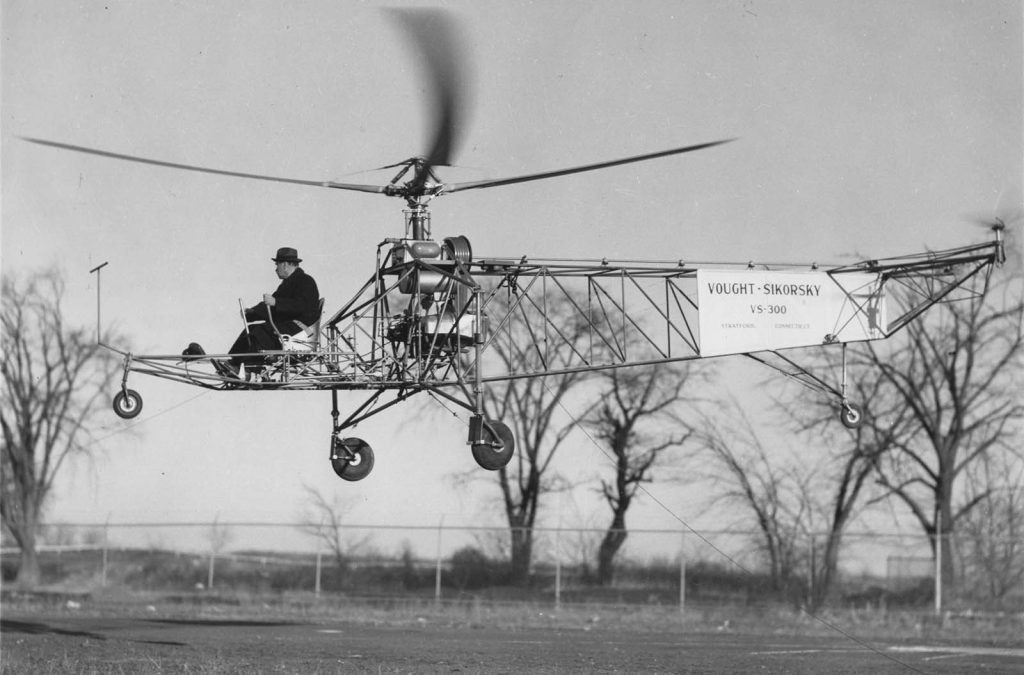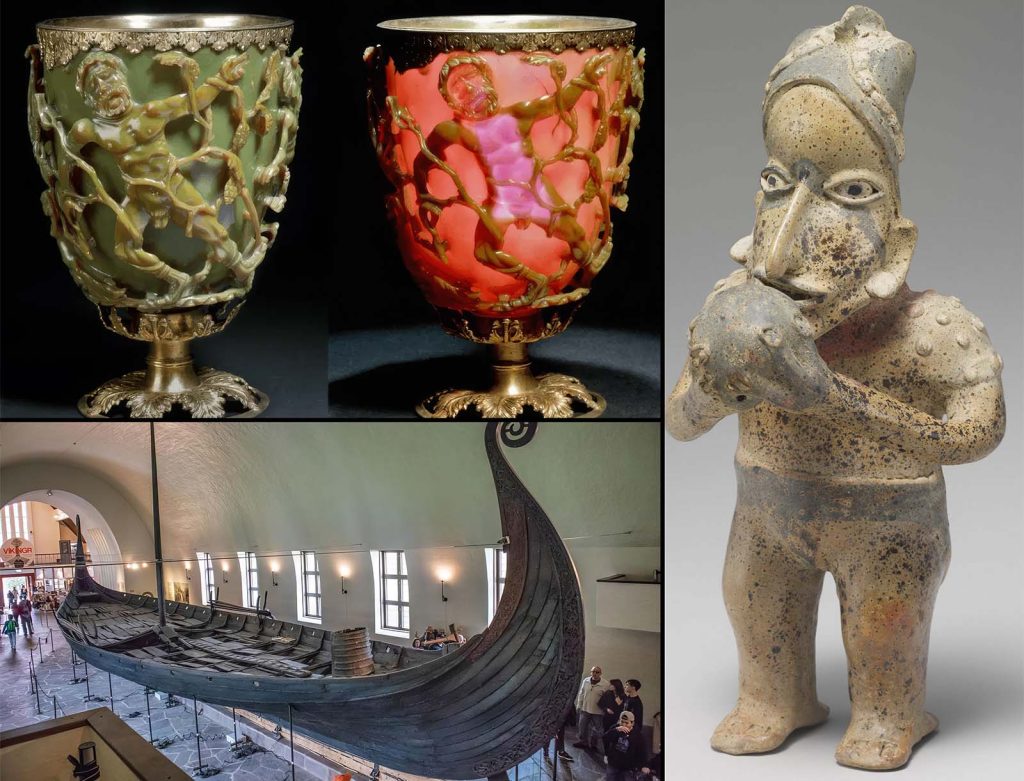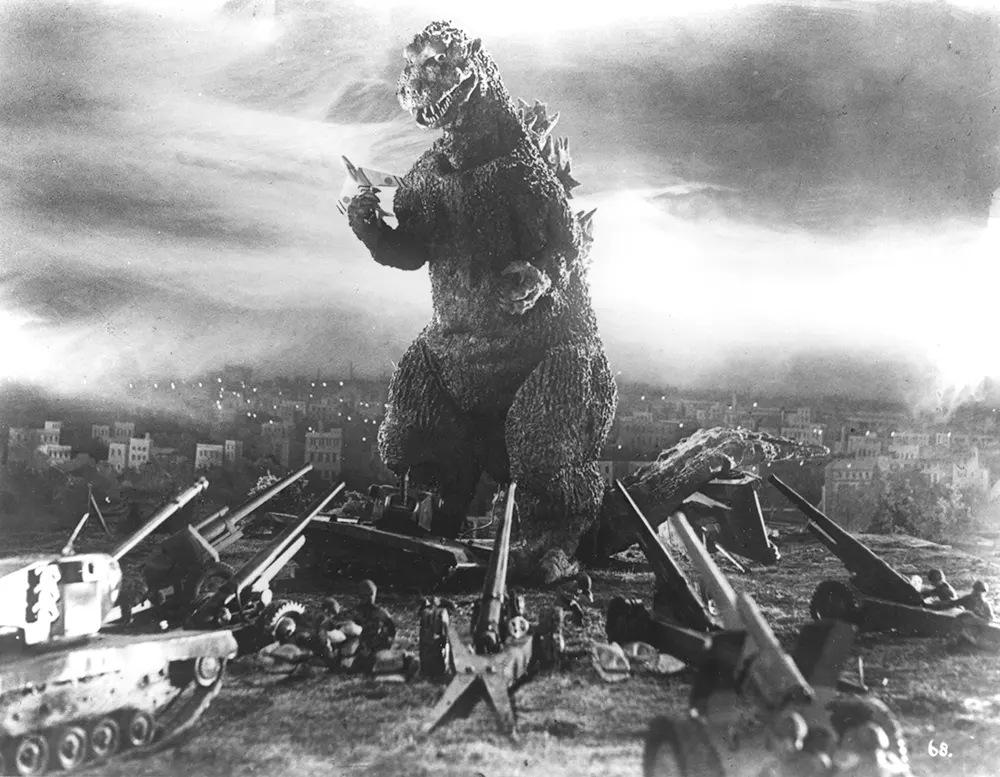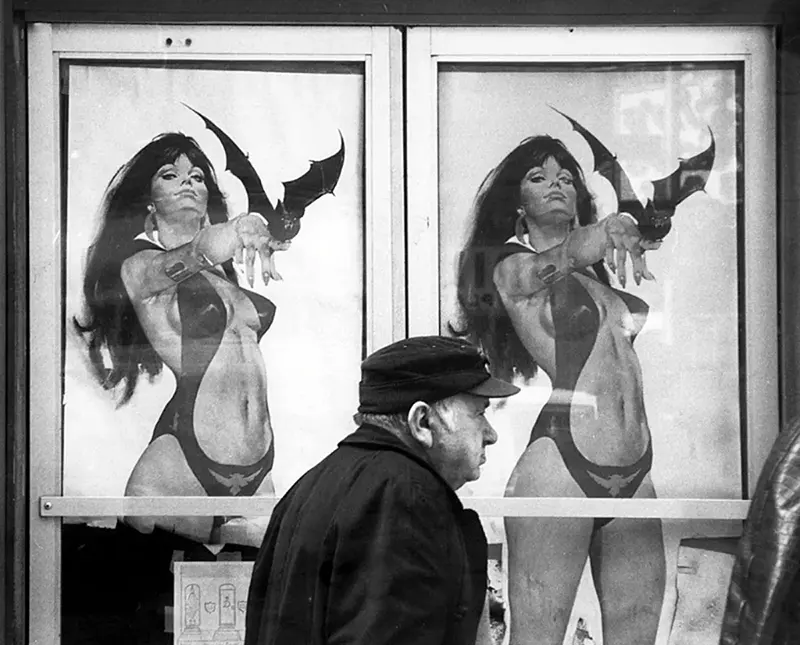
A plethora of go-go bars, sex shops, peep show establishments, and adult theaters became symbols of the city’s very apparent decay.
These vintage historical photographs, taken by photographers Andreas Feininger and Maggie Hop, give us a glimpse of Time Square at the peak of its social and urban degradation.
The decline of Times Square can be traced to the negative impacts of the Great Depression and World War II. In the 1950s, attempts to stop the growth of disreputable businesses through zoning rules met with few results.
Then the 1960s arrived. As one scholar notes, “the libertarianism of the sixties” changed the meaning of “obscene,” thereby opening a space for the public sale of adult allurements.
For example, the success of the twenty-five-cent peep show, introduced in 1966, spurred other small businesses to follow the trend by selling adult films and erotic merchandise.
Profits rose, the cost of leases skyrocketed, and then the mob “muscled in around 1968.” On the streets, prostitution by all genders, open drug trade, alcoholism, and con games, like three-card monte and clio, became commonplace.
Inside, crime thrived in the underground corridors of the subway and the passages at the Port Authority Bus Terminal despite the abundance of police.

A man looks at the offerings of a peep show store adjacent to a “sensitive meeting place” with “lovely girls.”
In the late 1970s, Times Square was depicted in Midnight Cowboy as gritty, dark, and desperate. Conditions only worsened and the crime took the city.
The area bounded by 40th and 50th Streets and Seventh and Ninth Avenues saw over 15,000 crime complaints per year.
In 1981, Rolling Stone declared West 42nd Street the “sleaziest block in America.” Likewise, one scholar wrote, “The Great White Way is now a byword for ostentatious flesh-peddling in an open-air meat rack.”
Indeed, male “hustling” became pervasive in the area as people exchanged money, illegal drugs, or other forms of payment for sexual favors.
Time Square’s central location, which once allowed the district to flourish as a prominent locale for high-end entertainment, now facilitated the sex market.
The influx of commuters, especially during rush hours, made male prostitution fairly easy and relatively frequent. The flow of human traffic during these periods allowed clients to solicit sex without attracting much attention.
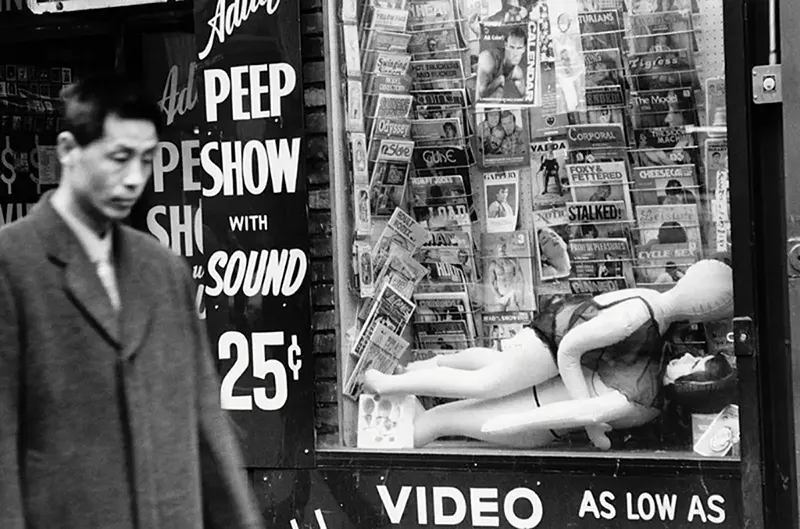
A man walking past the entrance to a topless disco.
In addition to the sex market, the drug trade also profoundly affected Times Square. Efforts to address the increase in prostitution, especially by juveniles, were derailed by the arrival of crack cocaine in Times Square in 1986. As a result, crime rates spiked and continued to increase through 1989.
Despite Times Square’s notorious reputation, it managed to maintain its powerful symbolism, in part because of its “chaotic action, dense and diverse pedestrian activity, [and] continuous role as the key entertainment district.”
After a tremendous time, money, and effort, Times Square slowly began to transform as adult stores and sleazy theaters were replaced by child-oriented stores and successful musicals.
In the late 1990s, the city benefited from the nationwide fall of violent crime rates, the resurgence of the finance industry, and the growth of the “Silicon Alley”, during the dot com boom, one of the factors in a decade of booming real estate values.
Many attribute New York’s crime reduction to specific “get-tough” policies carried out by former Mayor Rudolph Giuliani’s administration. The most prominent of his policy changes was the aggressive policing of lower-level crimes.

A man walking past the entrance to a topless bar in Times Square, New York City, 1975.
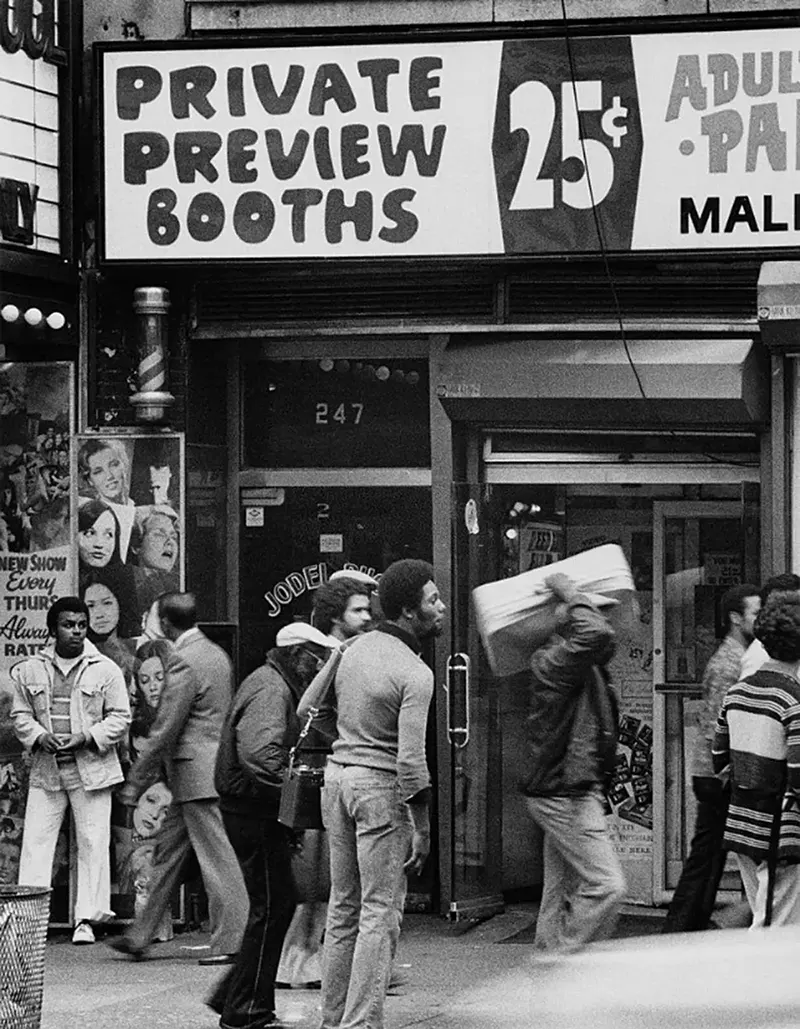
A sign offers ‘Private Preview Booths’ at a peep show, New York City, circa 1978.
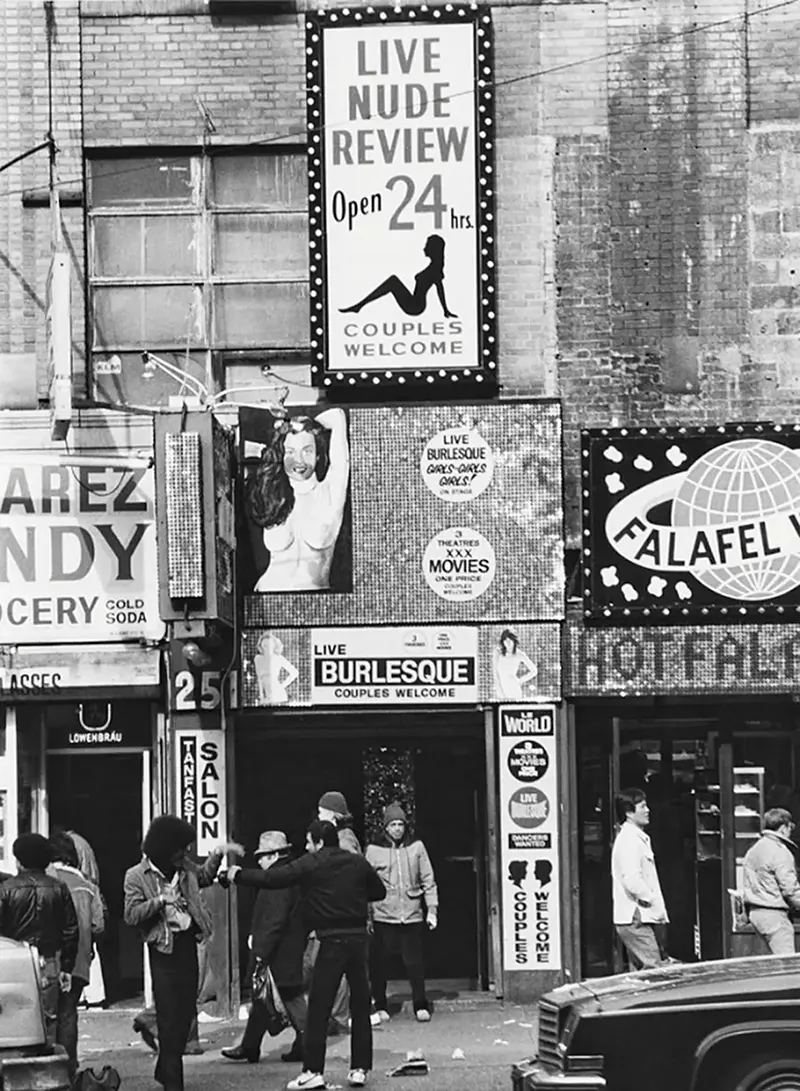
A view of the entrance to the ‘Live Nude Review’ on West 42nd Street. 1978.
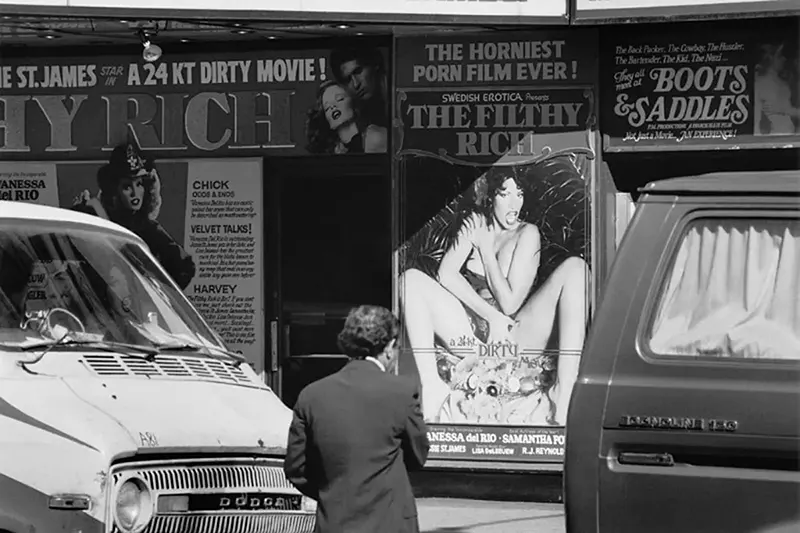
An exterior view of a cinema which is showing the adult film ‘The Filthy Rich’, New York City, 1982.

Cinema signs on the Rivoli Theatre and surrounding cinemas on Broadway advertising adult films and shows, New York City, 1983.

Cinemas and burlesque theatres on 42nd Street, New York City, circa 1984.

Men walking past the entrance to one of the strip clubs around Times Square. 1975.

Posters advertising burlesque shows at the Follies Burlesk and Gaiety Theater in in Times Square.
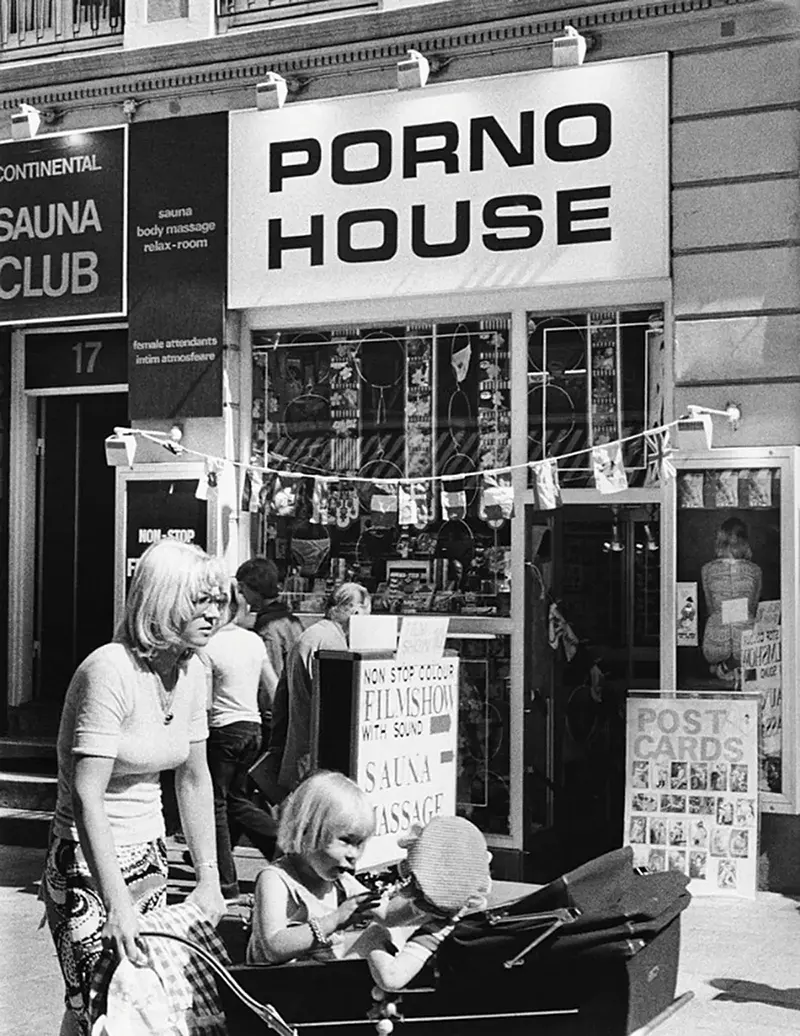
Street scene showing a adult shop and massage parlour. 1975.
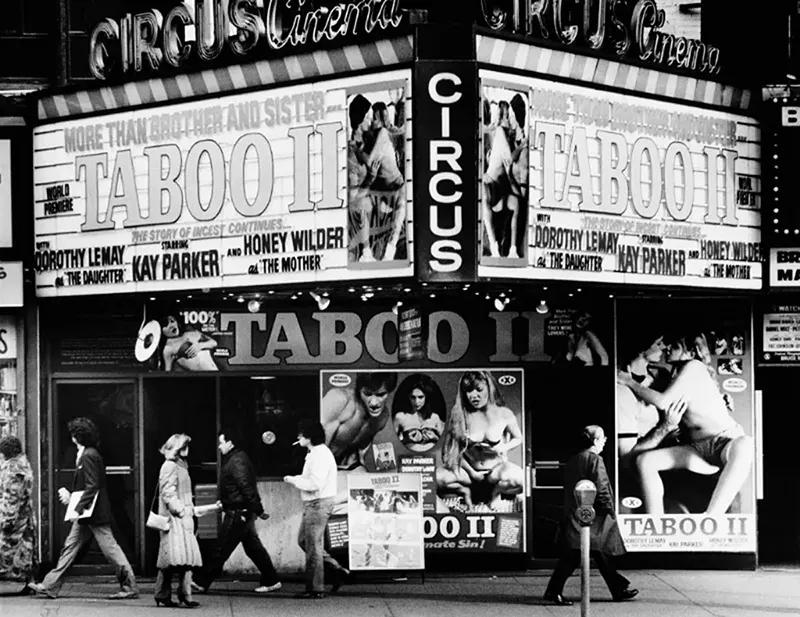
The Circus Cinema in Times Square, showing ‘Taboo II’, an incest-themed adult film, New York City, 1983.

The entrance to the ‘Rap Studio’, a strip club and adult book shop in New York City, circa 1978.
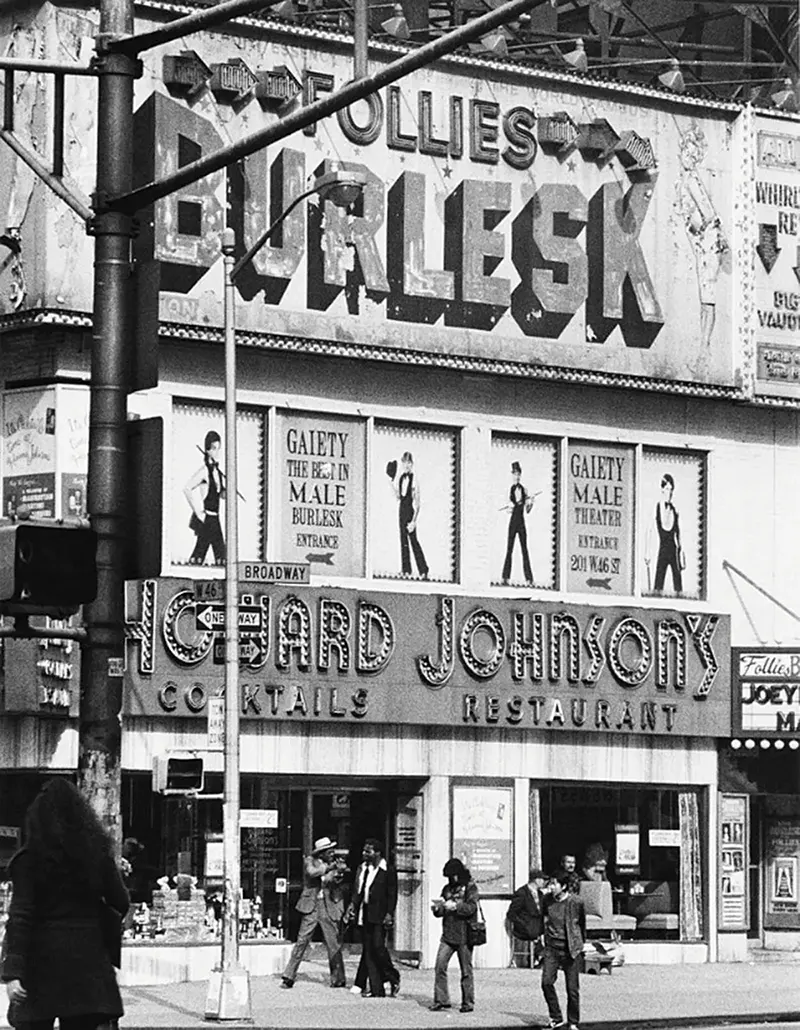
The ‘Follies Burlesk’ showing the upcoming show for the ‘Gaiety Male Theater’ above ‘Howard Johnson’s’ restaurant on 46th St. and Broadway, New York City, 1978.
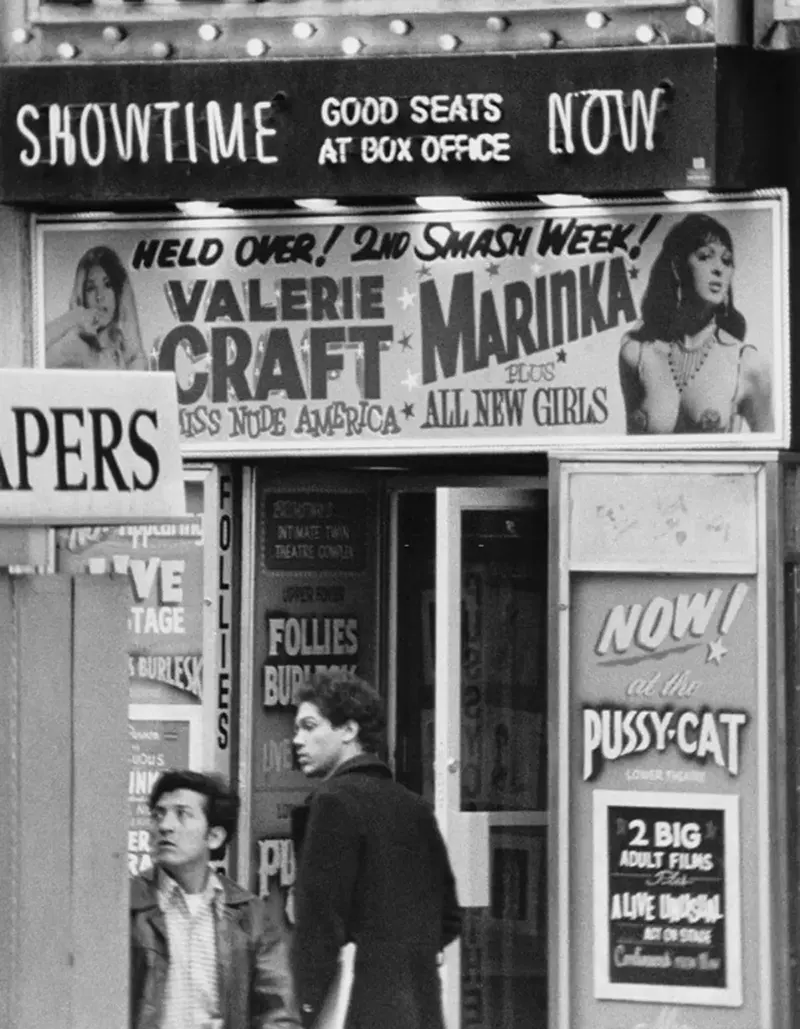
The ‘Follies Burlesk’ showing the upcoming shows for ‘Valerie Craft’ and ‘Marinka’, 46th St. and Broadway, New York City, 1978.
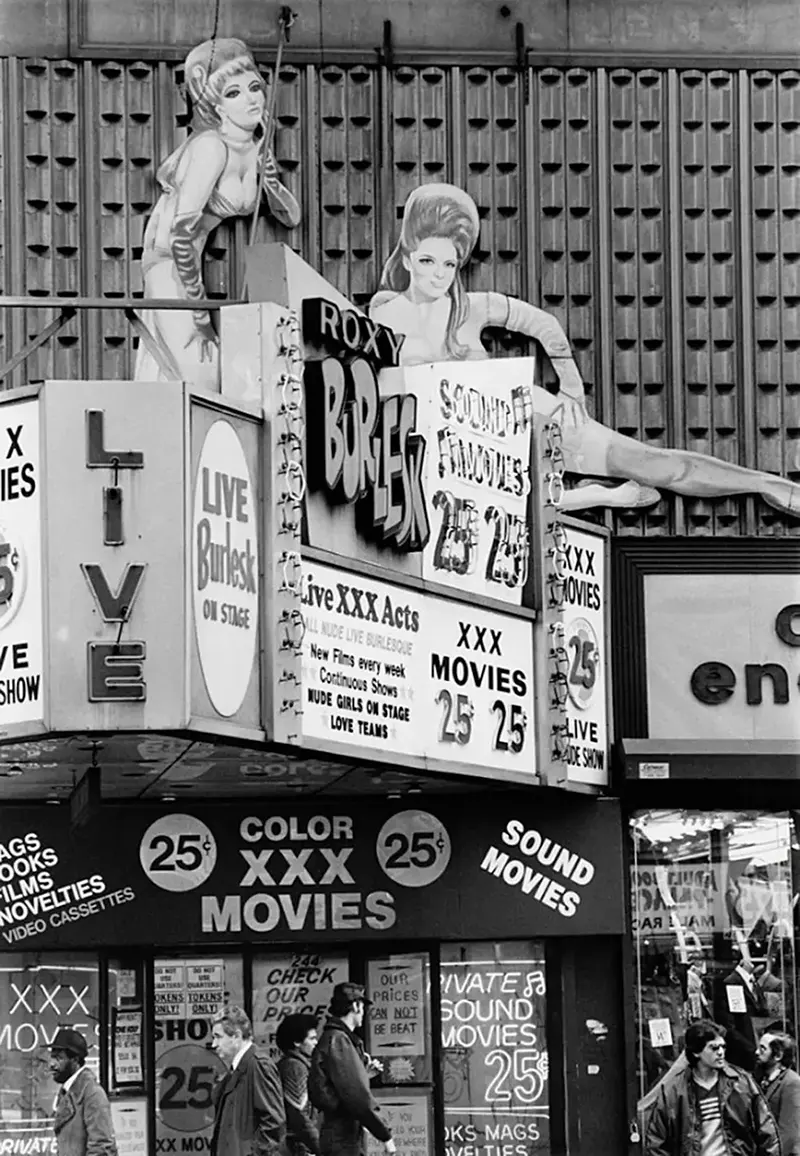
The Roxy Burlesk Theater on 42nd Street, New York City, 1980.

The ‘Whirly Girly Revue’ and ‘Bigtime Vaudeville’ strip club signs at the ‘Follies Burlesk’ on 46th St. and Broadway, New York City, 1978.

Two teenage hustlers walk by an x-rated video store in Times Square that offered nude girls for 25 cents.
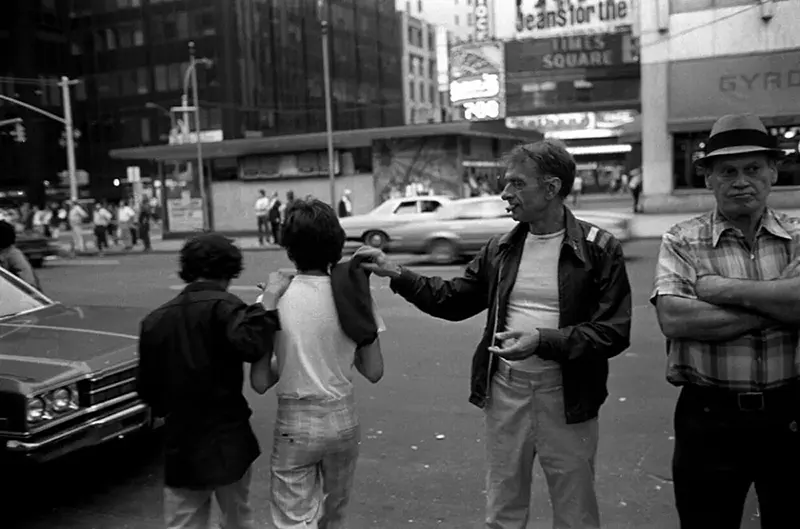
Hustlers and chicken hawks in Times Square.
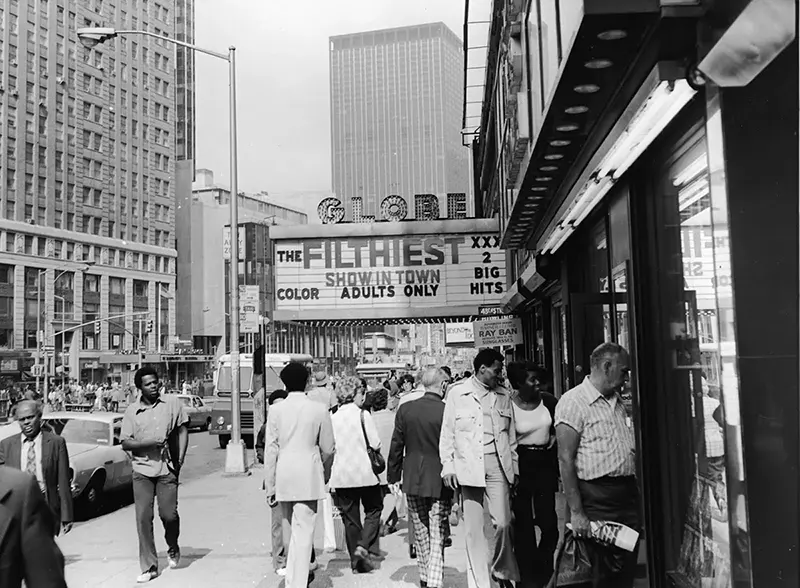
ourists looking into the windows of Times Square as they pass under the marquee for the Globe theater advertising the “filthiest show in town.”, 1975.
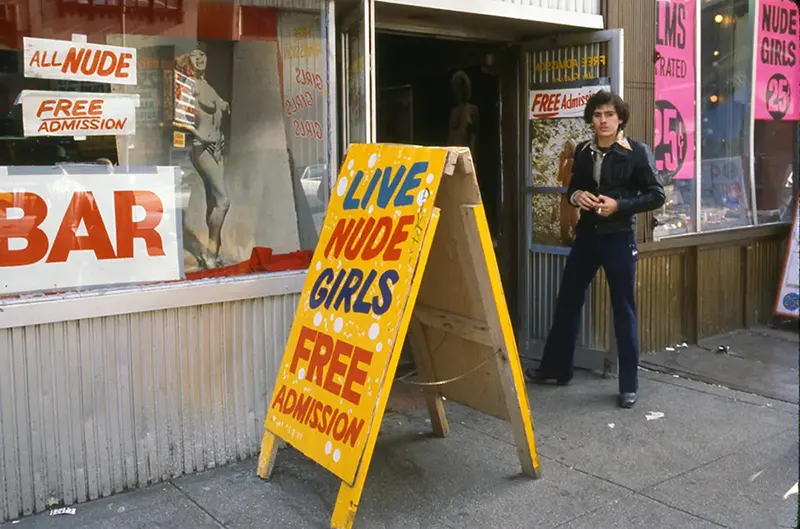
A man stands outside of a strip club on 42nd Street in the late 1970s.
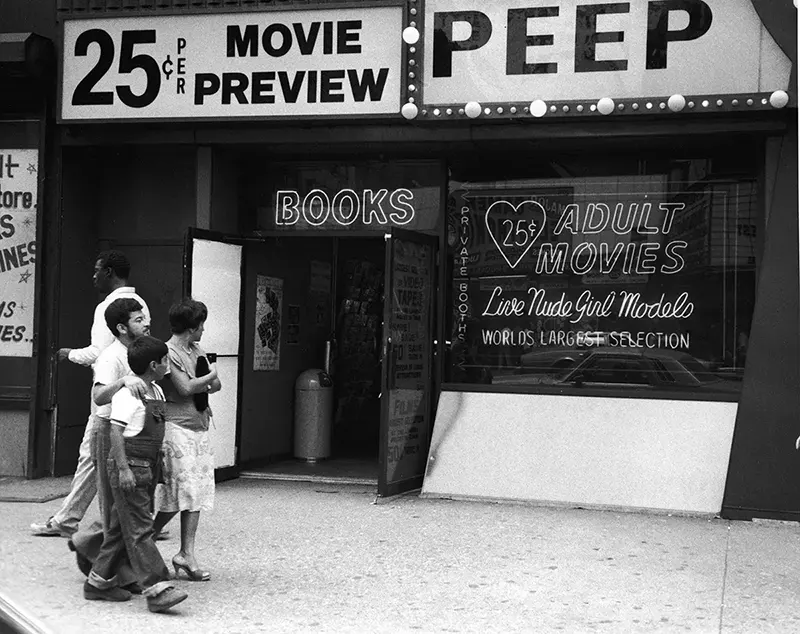
A family walks by “the world’s largest selection” of live nude girl models in 1970.
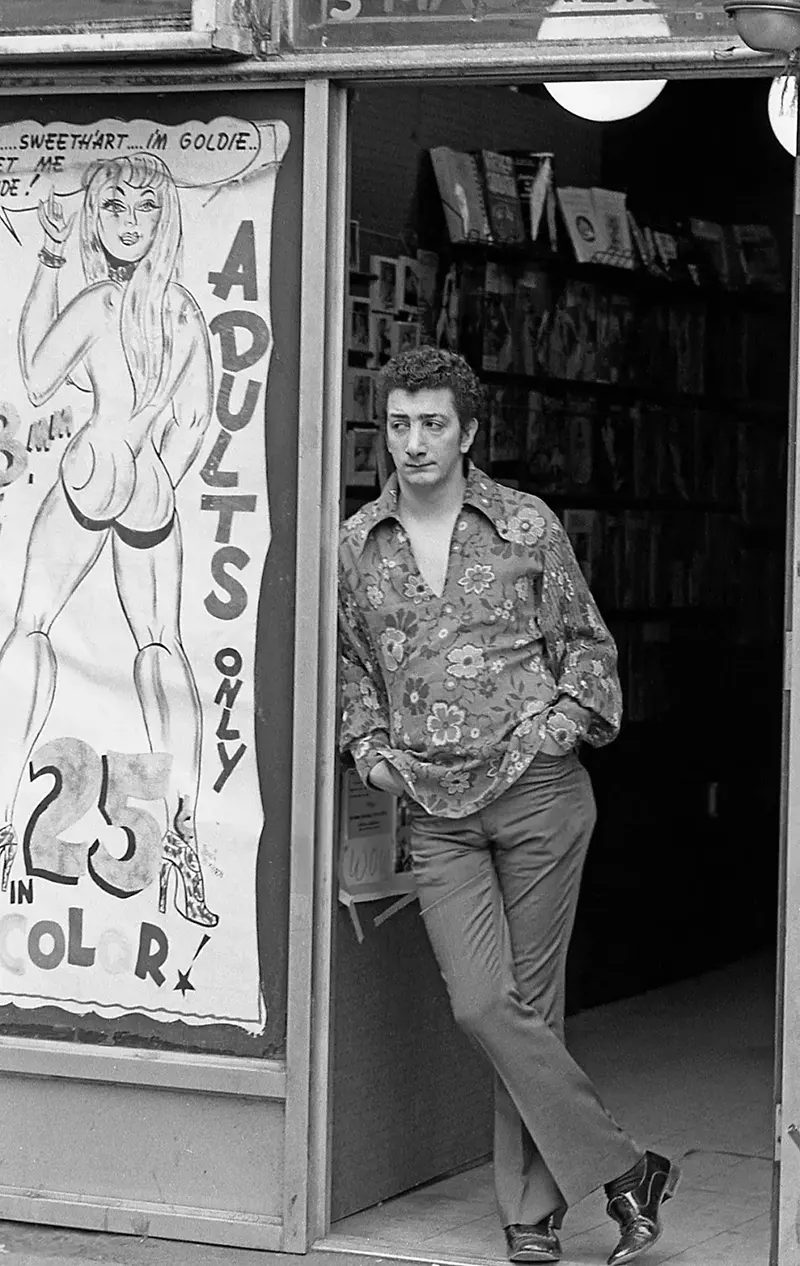
A salesman at a adult shop surveys his storefront as he waits for customers to stroll by. 1970.

Teenage hustlers share a cigarette while on 7th Avenue near 42nd Street.

A teenage hustler fooling around with two transvestites.

Two men walking past the entrance to a topless disco, New York City, circa 1980.

A team of the Guardian Angels — a volunteer patrol group dedicated to making New York’s subway system safe — get ready to go on patrol in 1980.

A group of prostitutes walk through the side streets of Broadway and Times Square in New York in the summer of 1971.

A Christian proselytizer walks in front of an adult theater on 8th Avenue.

Undercover cops lead a man who’s been arrested for selling crack in 1986.

A hustler and his friend in the subway, heading home in the Bronx after a night hustling in Times Square.

Two young hustlers sharing their happy moment.

Not everyone was happy about Times Square’s transition into a center of adult entertainment, including Women Against Pornography (WAP), which marched through the neighborhood in 1979.

An adult shop with cinema and live shows in the Times Square area in October 1975.

An usher stands near the box office of a movie theater that screens adult films. No one under the age of 21 would be let in.

Hustlers and chicken hawks.

Hustlers and chicken hawks.

Black Jack Exotic Book Store on 42nd Street between Seventh and Eighth Avenue features the “latest and greatest.” These stores were rampant in the 1970s.
(Photo credit: Andreas Feininger / Maggie Hop / Wikimedia Commons / National Archives and Records Administration / Time Square NYC Organization).

